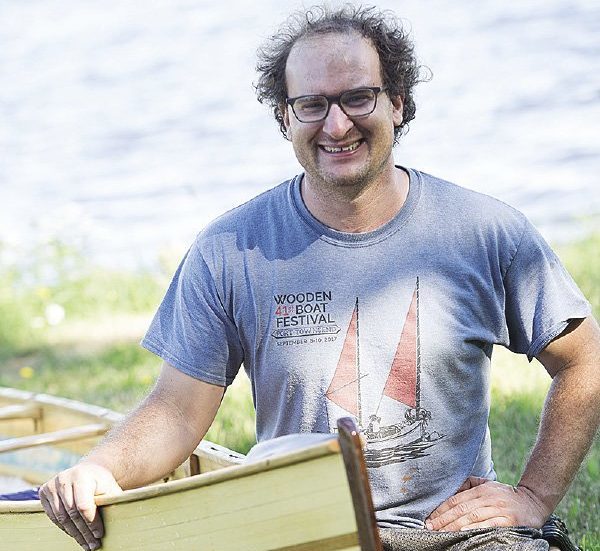As a boat builder, my favorite kind of project is to build a new custom wooden boat. To be sure, taking care of and repairing old boats is good work that I enjoy. It is a virtue to keep an old thing going and it is amazing how long a cedar and oak boat can last if well cared for. Beyond utilitarian values however, using old boats is a way to respect and learn from our history.
However, building a boat from scratch is uniquely satisfying. The fairing up of molds, watching the curves take shape, and making something beautifully complex from simple materials is very exciting. Going above and beyond and making customizations to make the boat perfect for the client is really what makes me want to do this work.
Anyone who is interested in wooden boat building is interested in history. Boats have been built for thousands of years in multitudes of shapes to serve a variety of specialized functions. I believe that there is very little innovative that can be done in boat design and my goal as a boat builder is to breathe new life into traditional designs. There has been a fair amount of work done by wooden boat builders to document and preserve old boat designs from the east coast. The Whitehall from New York Harbor, Swampscott Dory of Massachusetts and Maine Peapod are a few examples of these now famous historical east coast designs.
Little work has been done documenting the wooden boats of the Great Lakes, and in response, I have set about trying to document old wooden boats from Minnesota. We have a long fishing history, and a rich boating culture from our many inland lakes in Minnesota. While our hard winters do a number on boats and growth of the composites and aluminum industry has dominated the market with cheap mass-produced boats, there are a handful of old wooden boats in peoples garages and backyards that we have an opportunity to learn from.
I started this work by documenting a locally built, outboard-powered, herring skiff owned by the Cook County Historical Society. That boat was built in Croftville in the 1940s and was on the verge of completely falling apart before I was able to take the lines from it. Some 70 years later we have started building a replica of it through community efforts at North House Folk School.
I aim to continue documenting historic boats from Minnesota. There are very interesting and useful boat designs from around the state’s history. A variety of fishing boat designs beyond the Croftville herring skiff were built and used by commercial fishermen on Lake Superior. Row boats were built by shops around the state from Winona on the Mississippi River to lakes around the Twin Cities metro, and used as far north as Gunflint Trail resorts. Wooden pleasure launches and passenger ferries were built and used around the state too, and wooden sailboats were built and raced on White Bear Lake. In the northern part of the state, we have a particularly rich wooden canoe history. Well-known builders including Joe Seliga and Lloyd Rehbein built canoes ranging from small solo fishing canoes to large 20-foot cargo canoes. If readers have old interesting boats such as any of those described, I encourage them to get in touch with me. I may be interested in measuring and documenting the design of the boat.
I would like to put together a collection of wooden boat plans endemic to Minnesota to encourage local boat enthusiasts to build from our history. Much of the interest in, and work for wooden boat builders is repair and rebuilding old wooden boats. This work is important, practical and I enjoy doing it. It preserves history, conserves resources and keeps our traditions alive. Building a new version of a local traditional boat accomplishes many of the same ends. While building boats uses valuable and scarce tree species like northern white cedar, white oak, white pine and tamarack, we do have small amounts of these local woods available and using them in a boat project is putting those trees to their highest possible use. These boats were designed with local conditions in mind and will still offer superior performance in unique Minnesota waters to boats designed for the national or global market.
I hope to encourage hobbyists to pursue their own projects building replicas of historic local boats and potential boat buyers to commission construction of new wooden boats. Sport fisherman might like to fish out of a Lake Superior herring skiff. Pleasure boaters might enjoy a row boat model that originated in Winona or Duluth. Preserving traditions through your boating and boat building deepens the experience and creates a unique source of pride in your boat.
Josh Tolkan is a boat builder in the Artisan Development program at North House Folk School, where traditional craft is taught on the shore of Lake Superior.




